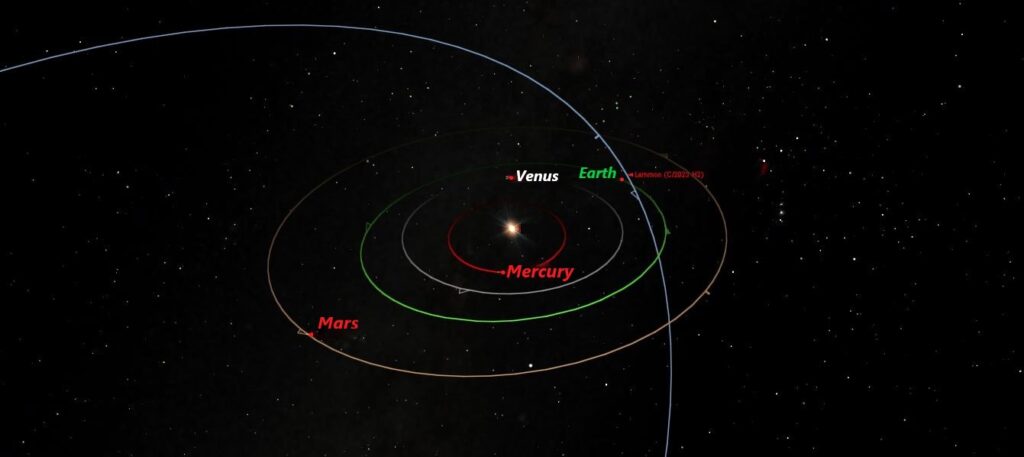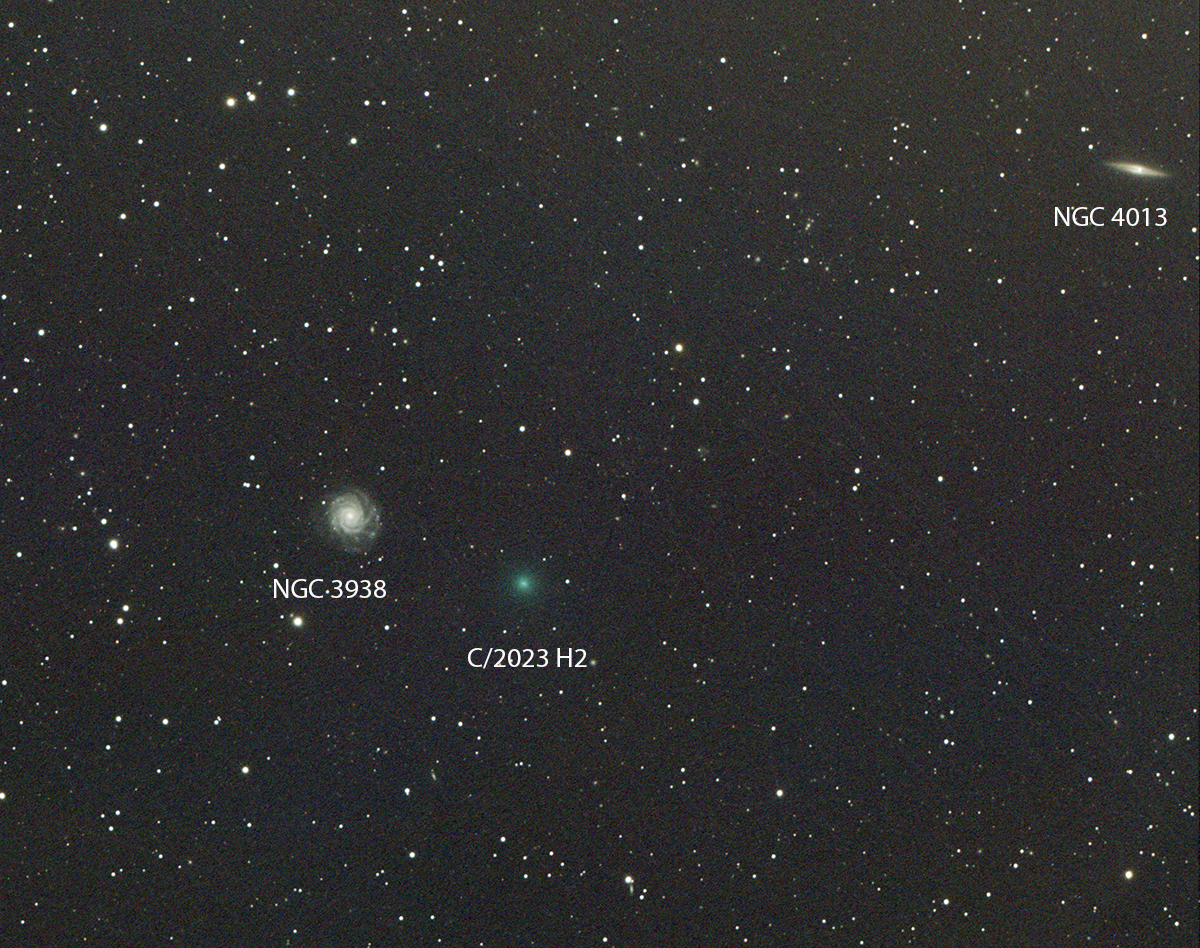At the end of January, comet C/2022 E3 (ZTF) passed at a distance of 0.284 astronomical units from Earth. This flight could well have remained the closest approach to the “tailed star” this year, but further events, as often happens, made their own adjustments. On April 23, 2023, during a regular survey of the sky using a one-and-a-half-meter reflector at the Mount Lemmon Observatory (Arizona, USA), a new comet was discovered, later designated C/2023 H2. After clarifying its orbit, it became clear that on November 11, it would fly 0.193 AU (28.9 million km) from our planet. Its visible brightness at that time may exceed the 7th magnitude.
The orbit of Comet Lemmon is a very elongated ellipse with a perihelion at a distance of 0.894 AU (134 million km) from the Sun. The “tailed guest” passed this point on October 29. At the same time, it was in the constellation Ursa Major in the sky. Such a significant deviation from the ecliptic is quite understandable: the inclination of the comet’s orbit is about 114°. That is, the comet also orbits our luminary in the direction opposite to the orbital motion of the large planets.

Until the end of October, it was difficult to observe C/2023 H2 because of the full Moon. At this time, it was moving away from the sun but approaching the Earth. On November 1, the comet crossed the conditional boundary of the constellation Boötes, and on November 5, it was within Hercules. Two days later, it passed 4° from its most famous object — the globular star cluster M13.
The “oncoming” motion of the comet leads to its high velocity relative to the Earth. At the moment of maximum approach, it will exceed 63 km/s, which will lead to a very rapid visible movement of C/2023 H2 against the background of stars: in an hour, it will shift by a little less than half a degree, that is, almost by the visible diameter of the lunar disk. Actually, the Moon is moving along the starry sky at about the same speed.
In fact, if this “tailed guest” had arrived 17 days earlier, it would have been able to approach our planet at the minimum possible distance — 0.038 AU (5.7 million km). Then its visible brilliance could reach the 3rd magnitude, but it would be difficult to see it because of its proximity to the Sun. Actually, Comet Lemmon does not belong to any particularly large or bright ones, and the good conditions of its visibility are now solely due to its rather successful position in orbit relative to the Earth. In another case, it could simply remain unattainable for weak amateur telescopes.

On the day of maximum approach, November 11, C/2023 H2 will “crawl” into the constellation Aquila, and on the 12th it will pass 4° from its brightest star — Altair. On the evening of November 14, the comet can already be seen within Capricornus. On the evening of the 19th, the crescent of the new Moon will appear at 4° from it, but it will only complicate observations.
On November 20, the “tailed guest” will move to the constellation Piscis Austrinus and the conditions of its visibility at the latitude of Kyiv will become unfavorable. In the southern regions of Ukraine, Comet Lemmon can be observed for about another week. Its next appearance is expected no earlier than 5870, and it is unlikely that it will then be in the same convenient position in relation to the Earth and the Sun as this autumn.
A detailed search map of the comet for the second half of November can be found here.
Follow us on Twitter to get the most interesting space news in time
https://twitter.com/ust_magazine
